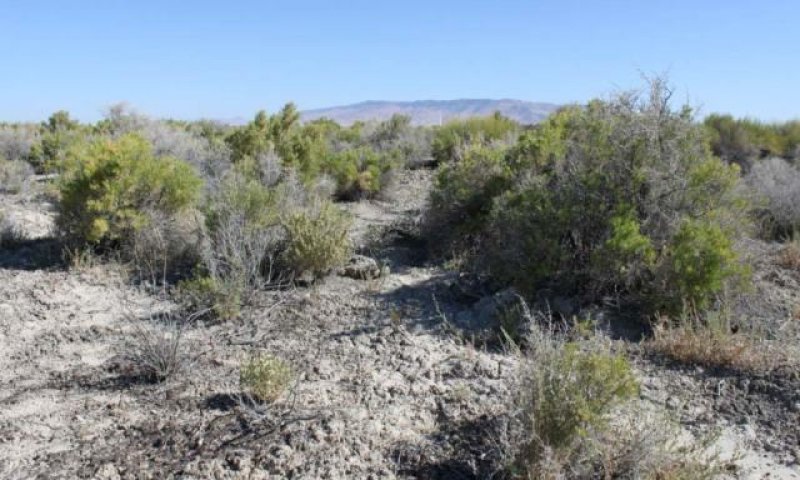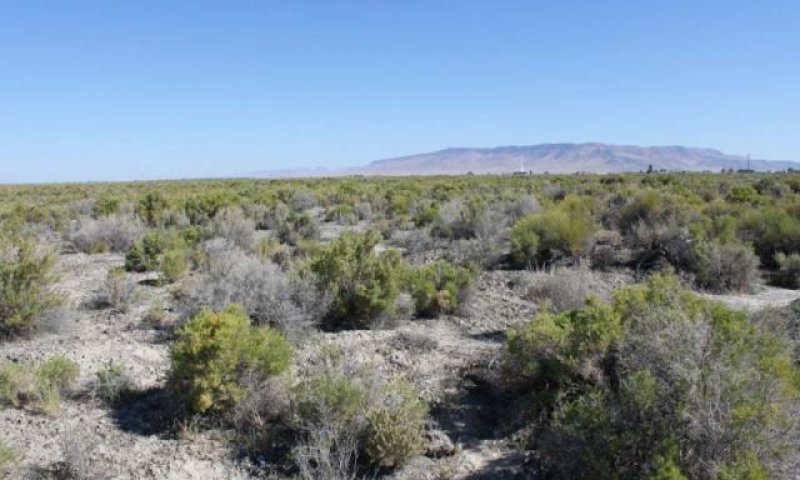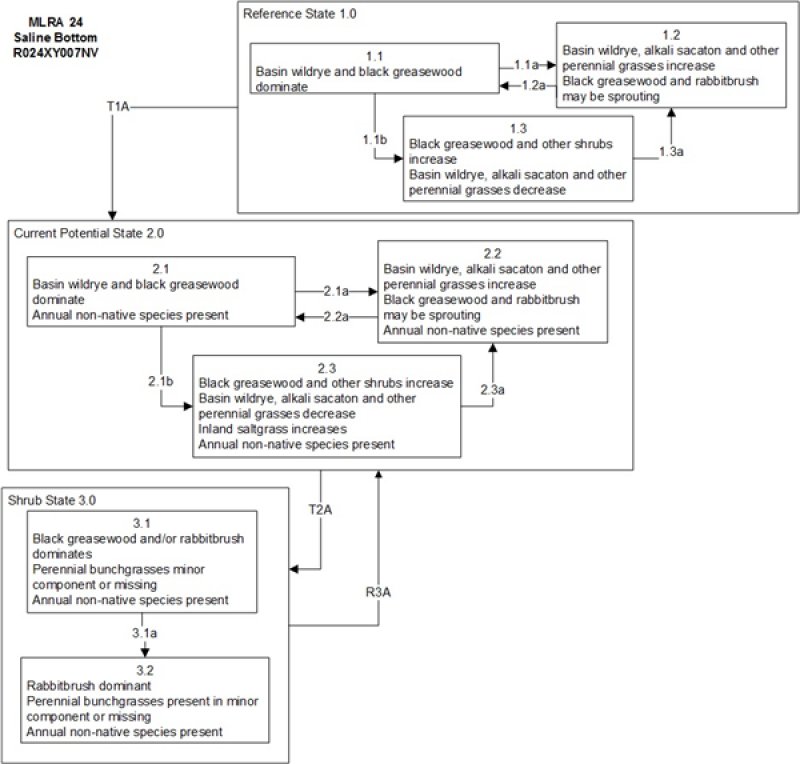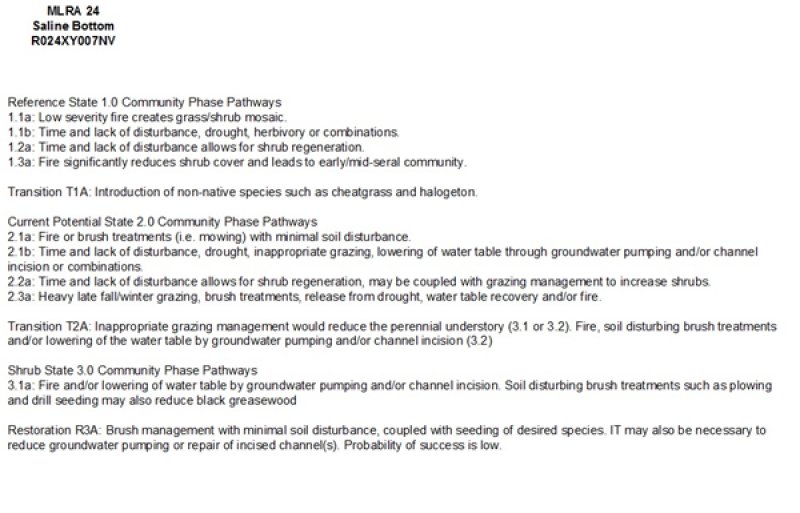Ecological dynamics
An ecological site is the product of all the environmental factors responsible for its development and it has a set of key characteristics that influence a site’s resilience to disturbance and resistance to invasives. Key characteristics include 1) climate (precipitation, temperature), 2) topography (aspect, slope, elevation, and landform), 3) hydrology (infiltration, runoff), 4) soils (depth, texture, structure, organic matter), 5) plant communities (functional groups, productivity), and 6) natural disturbance regime (fire, herbivory, etc.) (Caudle et al 2013). Biotic factors that influence resilience include site productivity, species composition and structure, and population regulation and regeneration (Chambers et al. 2013).
The Great Basin shrub communities have high spatial and temporal variability in precipitation, both among years and within growing seasons. Nutrient availability is typically low but increases with elevation and closely follows moisture availability. The moisture resource supporting
the greatest amount of plant growth is typically the water stored in the soil profile during the winter. The invasibility of plant communities is commonly linked to resource availability. Disturbance can decrease resource uptake due to damage or mortality of the native species and depressed competition or can increase resource pools by the decomposition of dead plant material following disturbance.
Black greasewood is classified as a phreatophyte (Eddleman 2002), and its distribution is well correlated with the distribution of groundwater (Mozingo 1987). Meinzer (1927) discovered that the taproots of black greasewood could penetrate from 20 to 57 feet (6 to 17 meters) below the surface.
Romo (1984) observed water tables ranging from 3.5 to 15 m under black greasewood dominated communities in Oregon. Black greasewood stands develop best where moisture is readily available, either from surface or subsurface runoff (Brown 1971). It is commonly on floodplains that are either subject to periodic flooding, have a high water table at least part of the year, or have a water table less than 34 feet (10 meters) deep (Harr and Price 1972, Blauer et al. 1976, Branson et al. 1976, Blaisdell and Holmgren 1984, Eddleman 2002). Ganskopp (1986) reported that water tables within 9.8 to 11.8 inches (25 to 30 cm) (of the surface had no effect on black greasewood in Oregon. However, a study, conducted in California, observed black greasewood to not survive six months of continuous flooding (Groeneveld and Crowley 1988, Groeneveld 1990). Black greasewood is typically a deep-rooted shrub but has some shallow roots near the soil surface; the maximum rooting depth can be determined by the depth to a saturated zone (Harr and Price 1972). The perennial bunchgrasses generally have somewhat shallower root systems than the shrubs, but root densities are commonly as high as or higher than those of shrubs in the upper 0.5 m but taper off more rapidly than shrubs. However, basin wildrye is weakly rhizomatous and has root depths of up to 2 meters. Basin wildrye exhibits greater lateral root spread than many other grass species (Abbott et al. 1991, Reynolds and Fraley 1989).
Drought will initially cause a decline in bunchgrasses, but prolonged drought will eventually cause a decline in shrubs, including black greasewood. As site condition deteriorates, these sites may become a pure stand of black greasewood or a pure stand with an annual understory. Marcum and Kopec (1997) observed inland saltgrass more tolerant of increased levels of salinity than alkali sacaton therefore dewatering and/or long term drought causing increased levels of salinity would create environmental conditions more favorable to inland saltgrass over alkali sacaton. Alkali sacaton is considered a facultative wet species in this region; therefore it is not drought tolerant. A lowering of the water table can occur with ground water pumping in these sites. This may contribute to the loss of deep-rooted species such as greasewood and basin wildrye and an increase in rabbitbrush, shadscale and other species with the absence of drought.
Basin wildrye is a large, cool-season perennial bunchgrass with an extensive deep coarse fibrous root system (Reynolds and Fraley 1989). Clumps may reach up to six feet (1.8 meters) in height (Ogle et al 2012b). Basin wildrye does not tolerate long periods of inundation; it prefers cycles of wet winters and dry summers and is most commonly in deep soils with high water holding capacities or seasonally high water tables (Ogle et al 2012b, Perryman and Skinner 2007).
Seasonally high water tables are necessary for maintenance of site productivity and reestablishment of basin wildrye stands following disturbances such as fire, drought or excessive herbivory (Eckert et al. 1973). The sensitivity of basin wildrye seedling establishment to reduced soil water availability is increased as soil pH increases (Stuart et al. 1971). Lowering of the water table through extended drought, channel incision or water pumping will decrease basin wildrye production and establishment, while sagebrush, black greasewood, rabbitbrush, and invasive weeds increase. Farming and abandonment may facilitate the creation of surface vesicular crust, increased surface ponding, and decreased infiltration; which leads to dominance by sprouting shrubs and an annual understory.
This ecological site has moderate resilience to disturbance and resistance to invasion. Primary disturbances on these ecological sites is drought, fire, flooding, Aroga infestation (Aroga websteri), and channel incision or other disturbance leading to a lowered seasonal water table. This facilitates an increase in shrubs and a decrease in basin wildrye. The introduction of annual weedy species, like cheatgrass (Bromus tectorum), may cause an increase in fire frequency and eventually lead to an annual state or a state dominated by rabbitbrush. Other troublesome non-native weeds such as broadleaved pepperweed or tall whitetop (Lepidium latifolium), hoary cress or whitetop (Cardaria draba), scotch cottonthistle (Onopordum acanthium) or bull thistle (Cirsium vulgare) are potential invaders on this site. Two possible alternative stable states have been identified for this site.
Fire Ecology:
Natural fire return intervals are estimated to vary between less than 35 years up to 100 years in salt desert ecosystems with basin wildrye (Paysen et al. 2000). Higher production sites would have experienced fire more frequently than lower production sites. Basin wildrye is relatively resistant to fire, particularly dormant season fire, as plants sprout from surviving root crowns and rhizomes (Zschaechner 1985). Fire maintained the grass dominance of these ecosystems. Increases in the fire return interval leads to increases in the shrub component of the plant community, potentially facilitating increases in bare ground, inland saltgrass and invasive weeds. Lack of fire combined with excessive herbivory converts these sites to black greasewood dominance.
Basin wildrye is relatively resistant to fire, particularly dormant season fire, as plants sprout from surviving root crowns and rhizomes (Zschaechner 1985). Fire maintained the grass dominance of these ecosystems, therefore increases in the fire return interval favors increases in the shrub component of the plant community. The reduction of grasses potentially facilitates increases in bare ground, inland salt grass, and invasive weeds. Lack of fire combined with excessive herbivory converts these sites to sagebrush, black greasewood, and rabbitbrush dominance.
Historically, black greasewood-saltbush communities had sparse understories and bare soil in intershrub spaces, making these communities somewhat resistant to fire (Young 1983, Paysen et al. 2000). They may burn only during high fire hazard conditions; for example, years with high precipitation can result in almost continuous fine fuels, increasing fire hazard (West 1994, Paysen et al. 2000). Black greasewood may be killed by severe fires, but can resprout after low to moderate severity fires (Robertson 1983, West 1994). Bentz et al. (2008) reported that
following a Nevada wildfire, black greasewood sprouts reached approximately 2.5 feet (76 cm) within 3 years. Grazing and other disturbance may result in increased biomass production due to sprouting and increased seed production, also leading to greater fuel loads (Sanderson and Stutz 1994, Paysen et al. 2000).
During settlement, many of the cattle in the Great Basin were wintered on extensive basin wildrye stands, however due to sensitivity to spring use many stands were decimated by early in the 20th century (Young et al. 1975). Less palatable species such as black greasewood, rabbitbrush and inland saltgrass increased in dominance along with invasive non-native species such as fivehook bassia, mustards, halogeton and cheatgrass (Roundy 1985). Spring defoliation of basin wildrye and/or consistent, heavy grazing during the growing season may significantly reduce basin wildrye production and density (Krall et al. 1971). Thus, inadequate rest and recovery from defoliation can cause a decrease in basin wildrye and an increase in rabbitbrush and black greasewood, along with inland saltgrass and non-native weeds (Young et al. 1975, Roundy 1985). Additionally, natural basin wildrye seed viability may be low and seedlings lack vigor (Young and Evans 1981). Roundy (1985) observed that although basin wildrye is adapted to seasonally dry saline soils, high and frequent spring precipitation is necessary to establish it from seed suggesting that establishment of natural basin wildrye seedlings happens only during years of unusually high precipitation. Therefore, reestablishment of a stand that has been decimated by grazing may be episodic.
Hydrology of these basin wildrye dominated sites is also critical for site function and maintenance. Seasonally high water tables have been o necessary for maintenance of site productivity and reestablishment of basin wildrye stands following disturbances such as fire, drought or excessive herbivory (Eckert et al. 1973). The sensitivity of basin wildrye seedling establishment to reduced soil water availability is increased as soil pH increases (Stuart et al. 1971). Lowering of the water table through extended drought or water pumping will decrease basin wildrye production and establishment while black greasewood, rabbitbrush, inland saltgrass and invasive weeds increase. Farming of saline-sodic soils may cause an increase in soil pH in the surface horizons leading to soil surface sealing, increased ponding and reduced infiltration. Additionally farming may facilitate the creation of a cemented layer (plow pan) causing a reduction in root penetration of seedlings. Cessation of farming leads to rabbitbrush dominance, increased bare ground and the potential for weed invasion.
As ecological condition declines and where management results in abusive grazing use by livestock, rabbitbrush and black greasewood increase and become the dominant vegetation in lower condition classes. Inland saltgrass increases as condition declines and typically dominates the understory when this site is in low ecological condition. Fivehook bassia and annual mustards are species likely to invade this site.
Fire Ecology:
Black greasewood communities have been historically subject to stand-replacing fire regimes with intervals of <100 years. Basin wildrye is top-killed by fire. Older basin wildrye plants with large proportions of dead material within the perennial crown can be expected to show higher mortality due to fire than younger plants having little debris. Fire maintained the grass dominance of these ecosystems. Increases in the fire return interval leads to increases in the shrub component of the plant community, potentially facilitating increases in bare ground, inland saltgrass and invasive weeds. Lack of fire combined with excessive herbivory converts these sites to black greasewood dominance. Basin wildrye is generally tolerant of fire but may be damaged by early season fire combined with dry soil conditions. Alkali sacaton is classified as tolerant of, but not resistant to, fire. Top-killing by fire is probably frequent, and the plants can be killed by severe fire. Saltgrass rhizomes occur deep in the soil where they are insulated from the heat of most fires. Saltgrass survives fire by sending up new growth from rhizomes. Black greasewood may be killed by severe fires, but it commonly sprouts soon after low to moderate-severity fires. Rubber rabbitbrush is often top-killed by fire. Rubber rabbitbrush is a fire-adapted species that is typically unharmed or enhanced by fire. Recovery time is often rapid to very rapid. Rubber rabbitbrush is commonly one of the first species to colonize burned areas by sprouting or from off-site seed.
State 1
Reference State
The Reference state is representative of the natural range of variability under pristine conditions. Community phase changes are driven by interactions between disturbances and climate patterns. Expected disturbances include fire, chronic drought and/or periodic flooding (in certain locations). The existence of the reference community today is rare. Fire plays a significant role in the community phase dynamics due to the high production by grass species, like basin wildrye. However, the time between fires would be highly variable.
Community 1.1
Reference Community Phase
This community is dominated by basin wildrye, alkali sacaton and black greasewood.
Potential vegetative composition is about 70% grasses, 5% forbs and 25% shrubs.
Approximate ground cover (basal and crown) is 15 to 30 percent.
Table 5. Annual production by plant type
| Plant type |
Low
(lb/acre) |
Representative value
(lb/acre) |
High
(lb/acre) |
| Grass/Grasslike |
560 |
980 |
1330 |
| Shrub/Vine |
200 |
350 |
475 |
| Forb |
40 |
70 |
95 |
| Total |
800 |
1400 |
1900 |
Community 1.2
Community Phase
This community is dominated by basin wildrye. Other perennial grasses may respond positively to fire. Black greasewood and other shrubs have declined or may be present in unburned patches. Black greasewood, rabbitbrush and other sprouting shrubs may resprout and increase 1-2 seasons following fire, depending on fire intensity.
Community 1.3
Community Phase
Black greasewood and rabbitbrush increase. Perennial grasses are declining due to competition and shading from shrubs and/or extended drought. Inland saltgrass may increase due to low palatability and resulting resource acquisition from the decline in other perennial grass species.
Pathway 1.1a
Community 1.1 to 1.2
This pathway is a result of wildfire which removes vegetation cover and allows perennial grass cover to increase. Cover of sprouting shrubs will increase 1 to 2 seasons following fire.
Pathway 1.1b
Community 1.1 to 1.3
This pathway is a result of prolonged drought resulting in temporary lowering of the water table or absence of disturbance and natural regeneration over time favoring an increase in shrub cover.
Pathway 1.2A
Community 1.2 to 1.1
This pathway is a result of time which allows for re-establishment of black greasewood and other shrubs after fire.
Pathway 1.2B
Community 1.2 to 1.3
This pathway is a result of a temporary increase in depth to water table due to extended
drought or inadequate rest from herbivory.
Pathway 1.3A
Community 1.3 to 1.1
This pathway is a result of adequate prescribed grazing or release from drought facilitating the perennial grass cover to increase over time.
Pathway 1.3B
Community 1.3 to 1.2
This pathway is a result of fire.
State 2
Current Potential State
This state is similar to the Reference State.
Ecological function has not changed, however resiliency of the state has been reduced by the presence of invasive weeds. Non-natives may increase in abundance but will not become dominant within this State. These non-natives can be highly flammable and can promote fire where historically fire had been infrequent. Negative feedbacks enhance ecosystem resilience and contribute to the stability of the state. These feedbacks include the presence of all structural and functional groups, low fine fuel loads, and retention of organic matter and nutrients. Positive feedbacks decrease ecosystem resilience and stability of the state. These include the non-natives’ high seed output, persistent seed bank, rapid growth rate, ability to cross pollinate, and adaptations for seed dispersal.
Expected non-natives include fivehook bassia, mustards, cheatgrass, and halogeton.
Community 2.1
Community Phase
This community is similar to Community Phase 1.1. It is dominated by basin wildrye and black greasewood with a trace of annual non-natives in the understory.
Community 2.2
Community Phase
This community phase is representative of an early seral plant community. Perennial bunchgrasses, especially basin wildrye, respond positively to fire. Trace amounts of other shrubs may be present. Annual species, native and non-native, are prevalent in the understory. Sprouting shrubs, rabbitbrush and black greasewood, increase 1-2 seasons following fire.
Community 2.3
Community Phase (at risk)

Figure 10. Saline Bottom Community Phase 2.3 NV 775 MU240 Wendore Soil T. Stringham August 2010

Figure 11. Saline Bottom Community Phase 2.3 NV 775 MU240 Wendore Soil T. Stringham August 2010
Black greasewood dominates the overstory and perennial bunchgrasses in the understory are reduced, either from competition with shrubs or from inappropriate grazing, or from both. Rabbitbrush may be a significant component. Annual non-native species are stable or increasing. This community is at risk of crossing a threshold to State 3.0.
Pathway 2.1a
Community 2.1 to 2.2
This pathway is a result of wildfire removing vegetation cover and facilitating perennial grass cover to increase. Cover of sprouting shrubs will increase 1 to 2 seasons following fire.
Pathway 2.1b
Community 2.1 to 2.3
This pathway is a result of prolonged drought resulting in temporary lowering of the water table or absence of disturbance and natural regeneration over time, favoring an increase in shrub cover.
Pathway 2.2a
Community 2.2 to 2.1
This pathway is a result of the absence of disturbance facilitating natural regeneration over time.
Pathway 2.3a
Community 2.3 to 2.1
This pathway is a result of a low severity patchy wildfire removing shrubs overstory and facilitating basin wildrye and other perennial grass to increase in cover. Release from drought also favors increased perennial grass production.
Pathway 2.3b
Community 2.3 to 2.2
This pathway is a result of wildfire which removes vegetation and facilitates perennial grass cover to increase.
State 3
Shrub State
This state has two community phases, one that is characterized by a dominance of black greasewood overstory and the other with a rabbitbrush overstory. This site has crossed a biotic and abiotic threshold and site processes (infiltration/nutrient cycling) are being controlled by shrubs. Bare ground has increased.
Hydrology has been significantly altered through a decline in the water table leading to shrub dominance and a permanent reduction in the perennial grass understory.
Community 3.1
Community Phase
Black greasewood dominates the overstory. Rabbitbrush may be a significant component. Deep-rooted perennial bunchgrasses such as basin wildrye have significantly declined. Annual non-native species increase. Bare ground is significant.
Community 3.2
Community Phase
Rabbitbrush dominates the site. Perennial bunchgrasses are present but a minor component. Annual non-native species are present and may be increasing in the understory. Bare ground is abundant.
Pathway 3.1a
Community 3.1 to 3.2
This pathway is a result of soil disturbing practices, long term drought leading to an increase in depth to water table facilitating a decline in black greasewood cover. Rabbitbrush and other shrub cover increases.
Transition T1A
State 1 to 2
Trigger: This transition is caused by the introduction of non-native annual weeds, such as cheatgrass and Russian thistle.
Slow variables: Over time the annual non-native plants increase within the community.
Threshold: Any amount of introduced non-native species causes an immediate decrease in the resilience of the site. Annual non-native species cannot be easily removed from the system and have the potential to significantly alter disturbance regimes from their historic range of variation.
Transition T2A
State 2 to 3
Trigger: To Community Phase 3.1: Inappropriate cattle/horse grazing will decrease or eliminate deep rooted perennial bunchgrasses and favor shrub growth and establishment.
To Community Phase 3.2: Soil disturbing brush treatments will reduce black greasewood and possibly increase non-native annual species. Lowering of the water table due to groundwater pumping will also decrease black greasewood and allow for rabbitbrush and other shrubs to increase.
Slow variables: Long term decrease in deep-rooted perennial grass density and/or black greasewood.
Threshold: Loss of deep-rooted perennial bunchgrasses changes nutrient cycling, nutrient redistribution, and reduces soil organic matter. Loss of long-lived, black greasewood changes the temporal and depending on the replacement shrub, the spatial distribution of nutrient cycling.
Restoration pathway R3A
State 3 to 2
Restoration of this state would require mechanical or chemical brush treatment and
control of weedy annual species. Restoration may also require an increase in the water
table, including repair of incised channel(s) and/or reduced groundwater pumping. Seeding of grasses may be necessary if basin wildrye is severely reduced or no longer
present in the community. Fire is not a recommended treatment.





